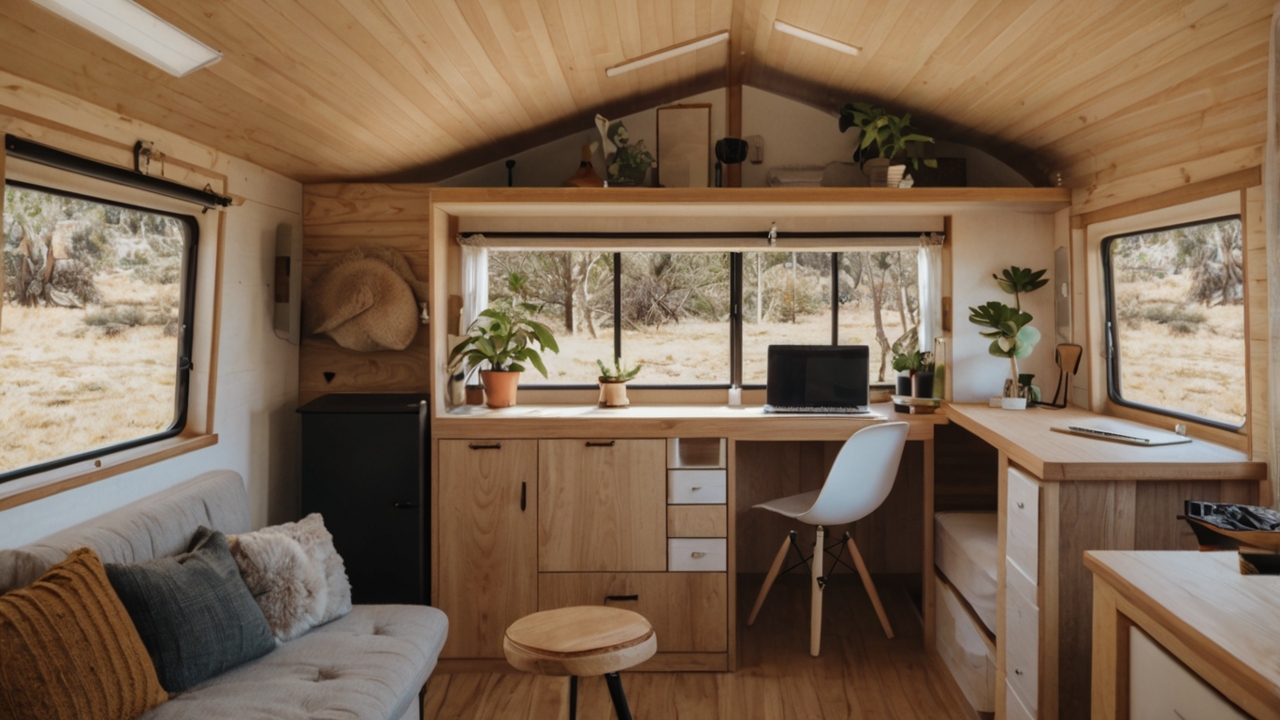Mayumiotero – The concept of Digital Nomad Interiors represents more than just aesthetics it’s about designing mobility, adaptability, and emotional comfort. As remote work continues to reshape lifestyles, many professionals are transforming vans, RVs, and compact spaces into personal sanctuaries that blend productivity with peace. For me, this movement feels like a rebellion against monotony where design becomes a lifestyle choice that supports freedom, efficiency, and mental well-being. The challenge lies in creating spaces that are not only functional but also nurturing enough to sustain creativity while constantly on the move.
“Read also: Apple’s $1 Billion AI Bet: How Gemini Will Supercharge Siri“
The Psychology of a Nomadic Workspace
At its core, designing for digital nomads means understanding how environment shapes mindset. Unlike fixed offices, mobile homes must evoke stability within constant change. This balance starts with sensory design light, sound, color, and texture working together to reduce stress and enhance focus. For example, neutral palettes with soft accent tones create calmness, while natural materials like wood and linen bring warmth. In my view, good design for nomads feels like meditation in motion it’s not about luxury, but about balance and belonging, no matter where you park your home.
Multifunctional Spaces for Efficiency and Flow
Every inch matters in a mobile home, making multifunctionality the foundation of smart nomadic design. Desks convert into dining tables, beds transform into sofas, and walls double as storage. However, the key isn’t just saving space it’s about preserving rhythm. A seamless transition between “work mode” and “rest mode” prevents burnout and enhances productivity. Personally, I believe the best digital nomad interiors don’t feel cramped or improvised; instead, they feel intentional, like every element has a purpose in maintaining flow and clarity.
Lighting and Mood: Setting the Tone for Productivity
Light dictates energy. Natural light, especially during morning hours, regulates circadian rhythm and creativity. Yet nomadic life often demands adaptability sometimes you’re parked under pine trees, other times in desert plains. Therefore, adjustable LED lighting, warm-toned bulbs, and compact skylights become essential. In my experience, layering light sources ambient, task, and accent gives mobile spaces a dynamic quality. It allows the home to evolve throughout the day, from a focused workspace at dawn to a relaxing retreat at night.
Minimalism Meets Comfort: The New Aesthetic of Freedom
Digital nomad interiors thrive on the minimalist principle own less, live more. However, minimalism here isn’t about cold sterility. It’s about intentional comfort. Think soft cushions with removable covers, foldable textiles, and modular furniture that feels inviting without being bulky. Every object must justify its place. I see this as a discipline of self-awareness understanding what truly adds value to one’s life. The beauty of a nomadic home lies in how it balances lightness with intimacy, minimalism with warmth.
“Read also: Align Technology Revolutionizes Invisalign Treatment with ClinCheck Live Plan“
Technology Integration for Seamless Mobility
Modern nomads live on Wi-Fi and battery power. Hence, the digital backbone of the interior must be invisible yet powerful. Solar panels on the roof, lithium batteries under the floor, and routers with global SIMs define the architecture of mobility. Furthermore, smart home systems now allow remote climate control, lighting automation, and energy monitoring even in a van. From my perspective, technology here should act as a silent enabler, enhancing comfort without dominating the aesthetic harmony of the space.
Sustainability as a Design Ethic
Nomadic living naturally encourages sustainability smaller spaces mean smaller footprints. Yet eco-conscious design takes it further with recycled materials, energy-efficient appliances, and water-saving systems. Bamboo countertops, cork flooring, and biodegradable cleaning products are becoming staples among eco-nomads. For me, this connection between sustainability and design isn’t a trend; it’s a moral evolution. When your home moves with the earth, caring for it becomes instinctive. Sustainable interiors, therefore, are a reflection of ethical travel and mindful living.
Designing for the Soul: A Sense of Belonging Everywhere
Ultimately, Digital Nomad Interiors are not just about mobility they’re about creating emotional anchors in transient lives. Small rituals, like brewing coffee by sunrise or journaling at a fold-out desk, transform temporary shelters into homes with meaning. Good design should tell a story one that moves with you yet always feels like home. In my opinion, the most successful nomadic spaces don’t chase perfection; they chase authenticity. They remind us that comfort isn’t tied to location but to connection between body, space, and spirit.













